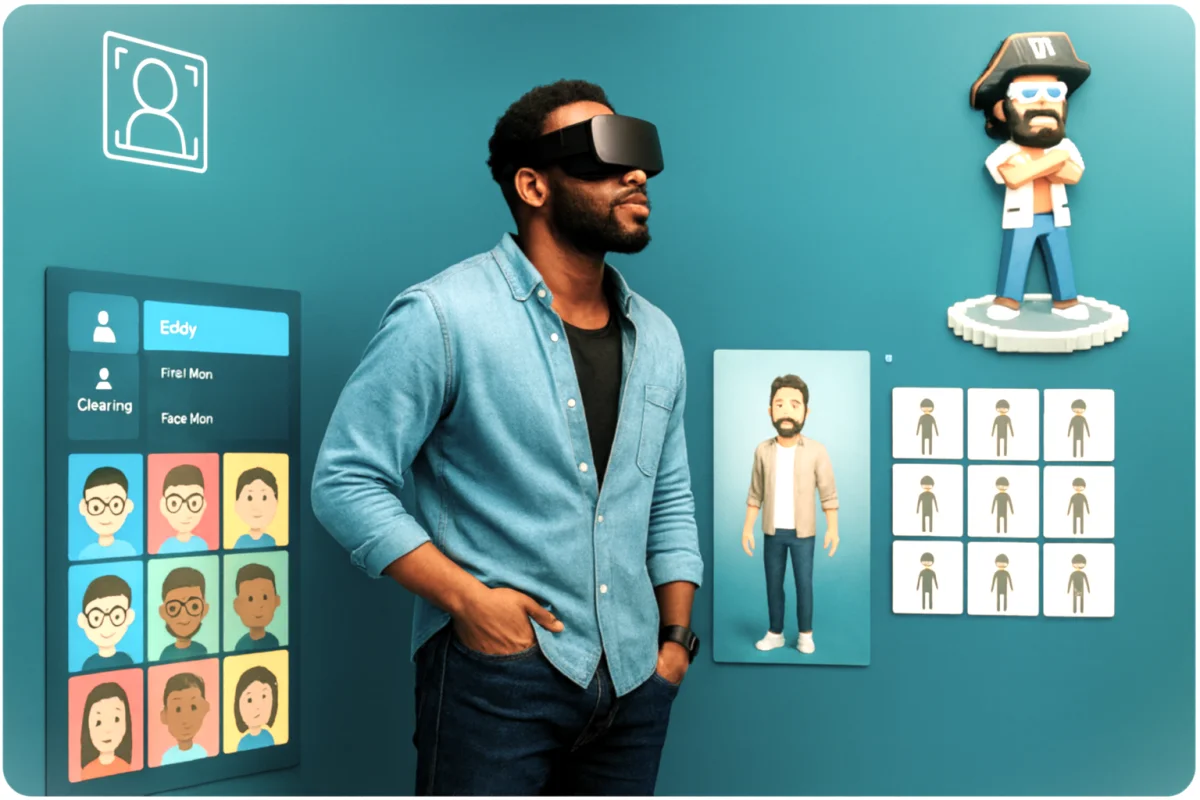How Are Metaverse Avatars and Virtual Identities Created?
The Metaverse has already become a space where people create not only virtual worlds but also their own digital “selves” through avatars. An avatar is a character that represents us in digital environments, allowing us to move, work, socialize, and interact with other users. But how is this virtual identity built, and what technologies make it possible?

Creating an Avatar
The design of an avatar begins with graphical modeling. Platforms like Meta Horizon Worlds, Roblox, and Decentraland offer tools where users can customize facial features, body shapes, clothing, and accessories. New-generation platforms even use AI technology to transform a user’s photo or video into a realistic 3D avatar.
It’s also possible to create stylized avatars — for example, as an anime character, a cyberpunk hero, or a fantasy figure. This freedom gives users the chance to be what they cannot be in real life.
The Importance of Virtual Identity
Virtual identity goes far beyond appearance. It includes behavior, communication style, interests, and digital activities. On some platforms, avatars can have unique “personality data” that is applied in games, virtual meetings, or collaborative projects.
Virtual identity fosters new forms of social interaction. In the Metaverse, friendships, collaborations, and even business meetings become more flexible — people may be in different corners of the world, yet share the same digital space.
Technologies and Tools
- 3D Scanning — Real body scans are turned into lifelike avatars.
- AI Algorithms — Synchronizing facial expressions and voice in real time.
- Blockchain — Verifying avatar ownership and digital identity.
- VR/AR Devices — Capturing movement and emotions to bring avatars to life.
Advantages
- Freedom — Be whoever you want to be.
- Global Communication — Interact with people from anywhere in the world.
- Business and Education — Virtual meetings, lectures, and training sessions.
- Economic Activity — Trade NFT clothing, accessories, and digital real estate.
Challenges
Despite the progress, virtual identity comes with challenges. Privacy is a major concern — how safe are users’ personal data? Psychological impact is another issue — is it healthy for people to spend more time in digital spaces than in real life? And finally, authorship and ownership — does the avatar belong to the platform, or to the user?
Conclusion
Metaverse avatars and virtual identities are becoming an essential part of our digital lives. They are reshaping communication, creativity, and even economic activity. 👉 Do you think people will spend more time in the Metaverse than in the real world in the near future?
✍ Article Author
- Registered: 26 July 2025, 15:34




 Silent Cat 🐾
Silent Cat 🐾